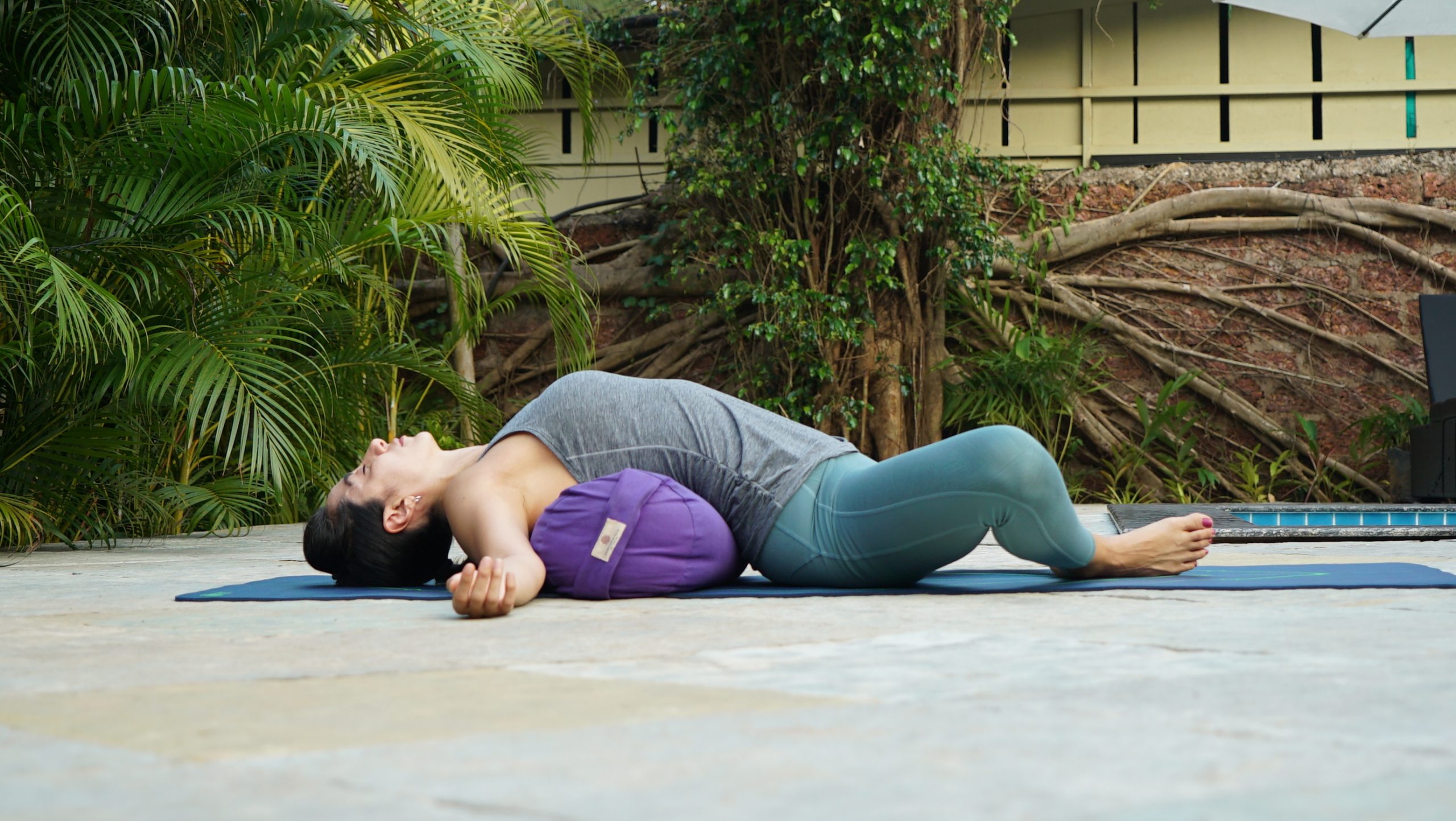The Next Big Thing in Yoga
Hot yoga, power yoga, aerial yoga…sound like familiar styles of yoga? Popular at one time, these fast-paced and dynamic forms of yoga are now making way for yin yoga. Gaining popularity worldwide, this slow-paced, yet intense practice has a deep impact on the mind and body. Let’s look at why yin yoga is the next big thing.
What is Yin Yoga?
‘Yin’ comes from the Taoist tradition. The practice is about finding stillness in the body and mind. Most other forms of movement are dynamic, produce heat and require immense stamina such as running, cycling, Ashtanga yoga, Vinyasa yoga, etc. Yin yoga, on the other hand, complements these dynamic forms as well as the fast-paced, stressful lives many of us lead today. It is practiced by holding each posture from 3-5 minutes up to 15-20 minutes. The long-hold allows practitioners to access deep connective tissues. This improves strength, flexibility and mobility as well as blood and oxygen supply. This infuses the body with more energy, balances the nervous system and induces a sense of calm.
Constant use of devices and social media makes it hard to break free from the external world. Burnout, fatigue and exhaustion are common conditions one faces today. Yin yoga requires immense mental strength and focus to hold a posture for longer, helping one quiet the restless mind. An online yin yoga teacher training, like Sampoorna Yoga’s 50 hour yin yoga TTC is highly recommended to get an in-depth understanding of the practice.

Practiced as prone, supine or seated postures, yin yoga uses props and accessories to help practitioners to achieve deep stretches. Furthermore, the alignment in each posture might differ from person to person. The best online yin yoga teacher training courses will equip you with how to use props, understanding alignment and more.
Why is Yin Yoga the New Favourite?
A significant increase in many practitioners taking up online yin yoga courses shows how popular this practice is becoming. Let’s explore a few reasons why it’s the new favorite:
- Flexibility and mobility: Holding postures for longer increases the flexibility and mobility in that specific region. The deep connective tissues are stressed and nourished in the region making it stronger as well.
- Select postures: Common postures involve backbends, forward bends, hip openers and twists. A few examples of postures are Butterfly, Swan, Cobra, Dragonfly. The names are slightly different from those practiced in Hatha Yoga, which commonly are in Sanskrit. The reason for this difference is to separate the physical form of the posture with a preconditioned way of practicing that involves a more yang attitude. (To deepen this topic watch “Why do Yin Poses Have Different Names?”)
- Accessing ignored regions: Most active/dynamic “yang” forms of movement, such as running, cycling, Vinyasa Flow, Ashtanga Vinyasa, etc., work on strengthening the muscles. They create heat in the body, burn calories and strengthen certain functions of the body. However, in these forms the connective tissues are usually neglected. In yin yoga, the connective tissues are strengthened and nourished. If you’re looking to get a deeper understanding of how this works, our online yin yoga teacher training programs take avid practitioners through an understanding of anatomy in yin yoga. In short, yin yoga stretches, compresses and twists the deep connective tissues like tendons, ligaments and bones. To keep the fascia strong, a healthy pressure needs to be applied, which can be done through longer holds. This makes the tissues flexible and stronger, and increases blood circulation and oxygen to the regions that have been ignored.
- Relieves stress and anxiety: The practice balances the nervous system by providing a stimulus to specific regions. This is detected by the sensory nerves around the tissues and a signal is sent to the brain and spinal cord for processing. This leads to a heightened sense of awareness. The parasympathetic nervous system is activated and the nervous system learns to relax, lowering stress hormones and the heart rate. The practice is grounding, calming and energizing.
- A mindful practice: Considering its slow-paced nature, yin yoga is known to improve mindfulness. When holding posture, students are guided to pay attention to the feelings and sensations in the mind and body. Emotions, pain or uncomfortable thoughts may arise. Students are encouraged to hold the postures, go inward and accept the different patterns. With practice, one becomes more mindful and calm, and learns to stay in the present. One even learns to take this mindfulness skill off the mat and into everyday life.
- Embracing discomfort: Yin yoga is slow-paced, but not easy. It takes effort and determination to hold still in every posture. It urges practitioners to come out of their comfort zone and embrace discomfort. That’s where the benefits lie. This includes physical, mental and emotional benefits. Students are encouraged to let go of fear, confront anything and everything they feel while in the posture, and accept those feelings.
For those starting their yin yoga journey, it could be difficult in the beginning. It takes time to get used to holding a pose for longer, not to mention the strength and effort required. But regular practice will improve your awareness, health and well-being.
Eli Aguilar, The Yinside Yoga Program Founder
We recommend exploring an online yoga alliance approved yin yoga course if you’re a yoga teacher or practitioner looking to deepen practice or branch out and offer more value to your students.
Contact us if you are interested in learning more about the healing benefits of yin yoga or discovering how you can make it part of your lifestyle. At Sampoorna Yoga Online Academy, you will find specialized help focusing on your well-being, no matter where you are.


